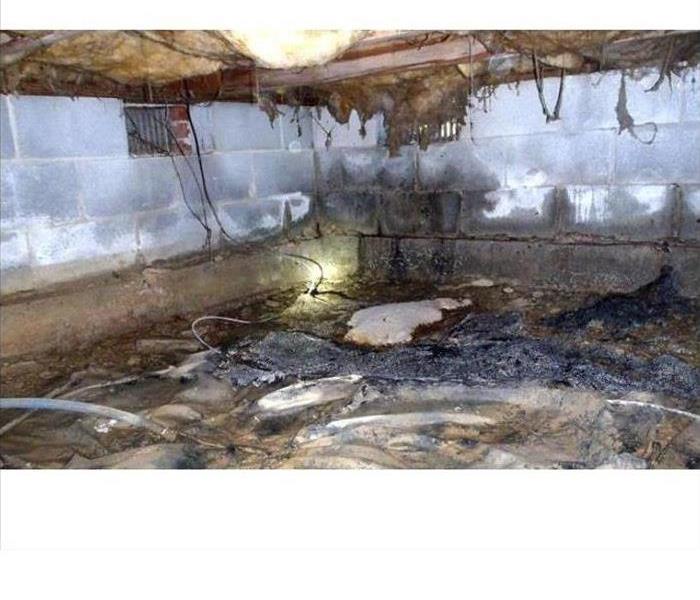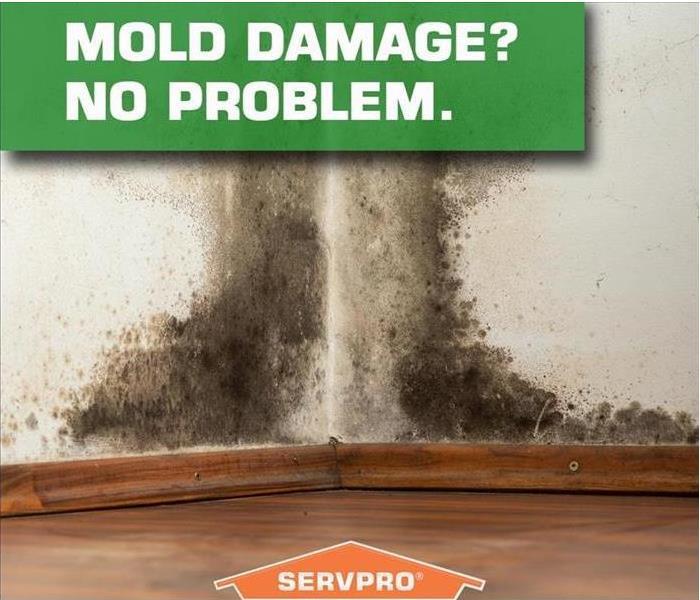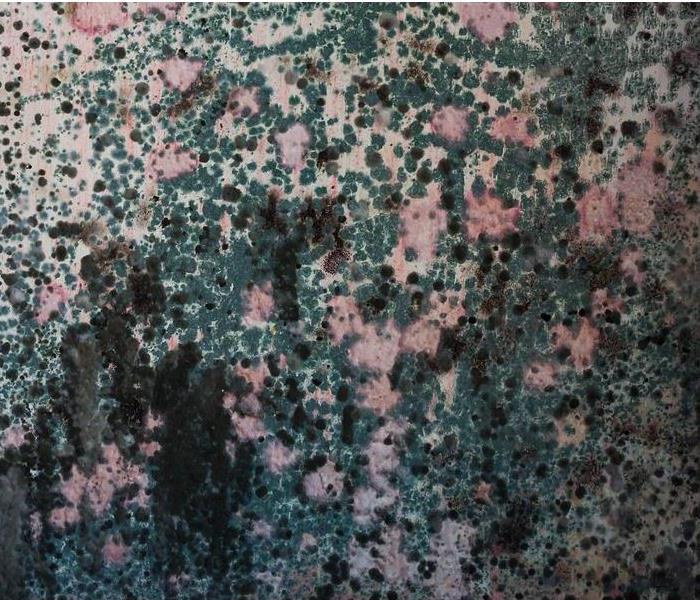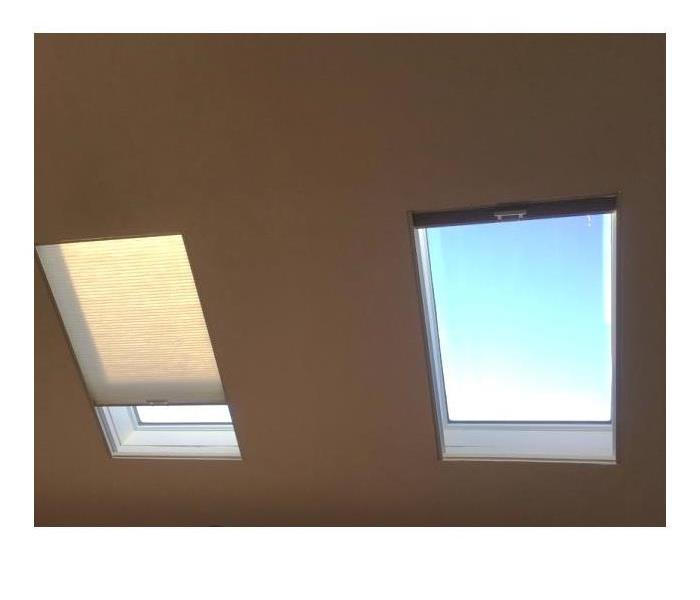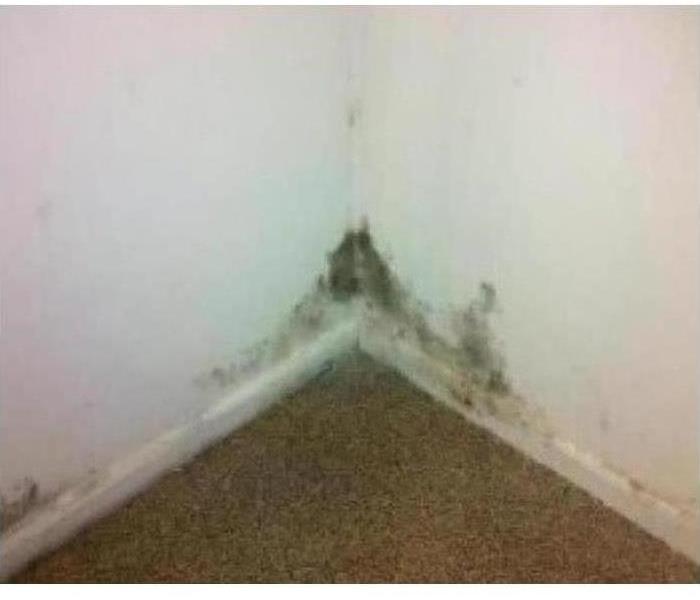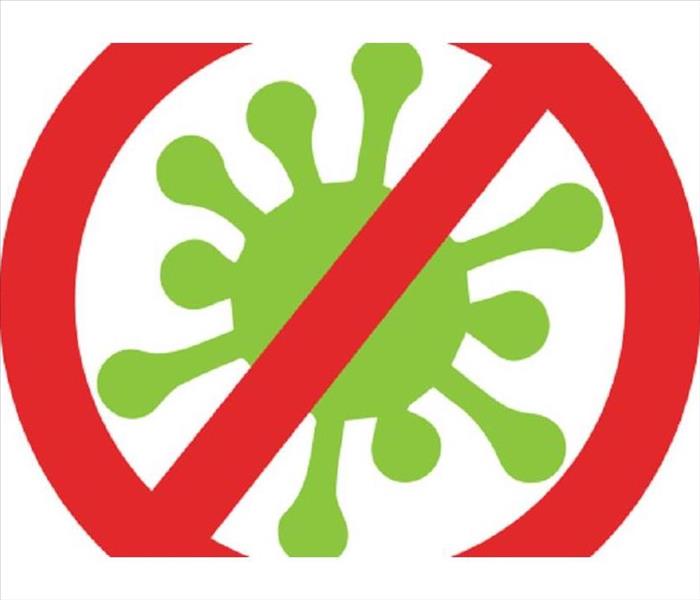Recent Mold Remediation Posts
How To Get Rid OF The Toxic Mold?
8/5/2024 (Permalink)
Are you concerned about the mold growing on your property? The growth of mold is an extremely serious issue for all the property owners. Apart from destroying the property, it can put your health at risk too. The mold thrives in a humid area and is extremely toxic. This is why you need to take immediate steps to get rid of it. There are many ways through which you can deal with the mold. Want to know how? Stay tuned then.
Figure Out The Problem
Before you start the mold removal process, you need to figure out how big the problem is. It will help you decide whether you should try to get rid of it yourself or hire some professionals for the job. If the problem seems manageable enough, then you can do it yourself. But, if the infected area is too large for you to handle, then it is advisable that you take the assistance of a professional service provider.
Dry Out The Area
Mold grows in a wet and humid area. Therefore it is extremely important that you dry out the area if you want to have it removed. Clean and dry all the mold-infested areas and materials before you start the removal process. To reduce the spread of mold spores, you can remove the unsalvageable items from the infected area and store them in plastic bags. This will ensure that your precious items stay safe and secure from the mold.
Wear Proper Clothes
If the affected area is small and you decide to get rid of the mold yourself, then you need to dress properly to do the job. Do not head out to get rid of the mold if you are not properly dressed. Wearing proper clothing and using the right equipment is extremely important to remove the mold. It will keep you safe and also reduce your exposure to mold spores. You will be prevented from inhaling the mold spores as well. you should also wear a respirator to avoid breathing into mold spores.
Use The Right Cleaning Solution
You can decide upon which type of cleaning solution to use for cleaning of mold by looking at the surface that you are going to clean. Although hard surfaces can be cleaned using soap and water, you will require stringent chemicals if you want to clean the mold properly. If the material has become too moldy, then you might need to throw it off as well.
Get The Help Of Professionals
If the mold affected area is too large for you to handle then you will not be able to get rid of the mold yourself. This is why you should get the help of professionals to deal with the situation. They will take care of everything professionally while you sit back and relax.
If your property is infested by mold, you should get rid of it as soon as possible. Dealing with the problem is extremely important for your property and your health as well. Looking for the best service providing company in town? Contact SERVPRO of Woodbury/Deptford to benefit from the expert services.
Keep Mold Under Control
8/2/2023 (Permalink)
Water damage and mold tend to go hand in hand. Luckily for you, SERVPRO can handle both problems for you! Typically, water damage doesn’t end once the water is removed. In reality, mold will still form in the damp areas of your property. It is essential to take action immediately after you notice water damage to prevent all unwanted mold growth for your home in Vermilion Hill, PA.
Even if you haven’t experienced water damage, there Is a chance that mold can still grow in your home. It is important to incorporate mold inspections into your regular home maintenance routine to properly protect your property. These actions are vital for mold protection and prevention:
Fixing leaks
Controlling Humidity levels
Addressing a Mold Problem
Fixing leaks
If you have leaky roofs, pipes, and windows, you also have a breeding ground for mold. Patch up and dry leaks as soon as you discover them. Ventilate bathrooms, kitchens and laundry rooms to prevent mold growth.
Controlling Humidity levels
Experts recommend maintaining a consistent 30% to 50% humidity inside the house at all times. Air conditioning and dehumidifiers can help manage these levels. As previously mentioned, you must perform regular mold inspections by checking problem areas frequently and discovering spores early to minimize the amount of damage done to your home.
Addressing a Mold Problem
If you follow these tips thoroughly the risk of falling victim to a mold problem will be reduced. If you do find mold growing in your home, don’t attack the issue alone. Enlist the help of trained professionals at SERVPRO to deter the problem quickly and efficiently. Mold is a pest that must be completely eradicated to stay gone. Doing the job correctly the first time can save you additional headaches and expenses down the road.
It is hard enough to deal with water damage. Take action to prevent mold growth to minimize future stress for good.
How Big Of A Health Problem Can Mold Be
8/2/2023 (Permalink)
Mold, a layman term used to identify a variety of fungi, which can easily be classified as unappealing and disliked. Mold can exist both indoors as well as outdoors in the form of variously colored, smelly, and unsightly fuzzy patches. However, the sight and smell of mold are the least of your worries as the effect on your health has been far worse.
How Does Mold Spread Health Problems
While mold exists on surfaces, it does produce a variety of spores, which then spread throughout the air in your property. In fact, if a patch of mold exists on your property, there isn't much that you can do that will prevent it from spreading these spores, which will only allow for the health issues to persist. Certain types of molds are even known to digest the surface that they are growing on. This is why you need to remove the mold itself.
Health Issues Caused By Molds
There are a variety of health issues inflicted on people who are exposed to mold. In fact, mold can affect different people with different health issues. So to show you how big of an issue mold can be on your health, here is a list of health issues caused by exposure to mold.
Respiratory Issues
The spores from mold that float in the air can produce a variety of irritants, mycotoxins, and allergens. Some of them have toxic nature and can greatly affect those who might be sensitive to them. So these toxic elements can then cause irritation within your throat, nose, and even lungs, which can cause you to become asthmatic or develop a chronic lung problem.
Allergies
Mold can also cause you to develop symptoms that overlap with different types of allergies, which can include seasonal allergies and even hay fever. So, symptoms, such as an itchy, blocked, or runny nose, excessive sneezing, and even watery eyes could persist as it affects your upper respiratory tract. People who are already asthmatic could begin to have asthma attacks due to the mold.
Aspergillosis
Aspergillosis is a variation of mold that can cause a variety of different types of health issues in different types of people. The health issues can include issues with lung function, headaches, coughing so severe that it could cause you to cough up blood, respiratory issues, and weight loss.
Other Health-Related Issues
Apart from toxins and irritants, mold also can produce bacteria and microbes. If one is exposed to such productions, then it could trigger their body to have an inflammatory response. It can also cause infections, such as a fungal or bronchial infection. In fact, for some, mold can even cause issues, such as hypersensitivity pneumonitis, bronchitis, and insomnia.
All in all, the growth of any variation of mold can and should be treated like the plague as it is quite a significant threat to your health. This means that all of the necessary precautions should be taken in order to ensure that it does not damage you or your loved one's health.
Mold Myths
9/18/2020 (Permalink)
When it comes to mold, there are many misconceptions that leave homeowners confused and misinformed. Just by mentioning the word “mold” causes people to panic. Although mold can be a very serious problem and should always be taken seriously, it is critical to have all the correct facts, so you can make knowledgeable decisions when necessary.
- “Bleach kills mold”
- Bleach is able to kill certain types of mold on nonporous surfaces, but it is uncertain on whether or not it can kill all types of mold on every surface. Most of the retail products out there only discolor the mold and are not suggested for porous surfaces for example, drywall, carpet, ceiling tiles and wood.
- “Mold is only found in homes with water damage”
It is true that mold generally forms in any areas that have problems of water seepage or flooding but unfortunately all homes could potentially wind up with having a mold problem. Molds and mildews are present both indoors and outdoors, and when mold spores land on a surface that contains moisture, that mold can begin to grow.
- “You don’t have to remove mold if you kill it”
- Even if you are able to kill the mold, there are allergens that live in mold that are still active. These allergens can even become airborne even if the mold is dead. Mold can also go dormant until conditions in the environment are optimal for regrowth. To protect yourself and your home, it is necessary to remove the affected area and remove the items that contain mold. You need to be cautious not to spread the mold spores to unaffected areas. Professionals, like us, are properly trained to handle mold allergens without further contaminating your home.
- “A small amount of mold is nothing to worry about”
- A small amount of visible mold in your home may just be the tip of the iceberg. Chances are it has been growing for some time now and requires a certified mold inspector to further inspect the situation.
- “Mold Remediation is easy to do on your own”
That is not always the case. When it comes to small areas of mold, it can be handled easily. But when the problem becomes pervasive, it is best to call the professionals. SERVPRO is always “Here To Help!”
Controlling Moisture in a Crawlspace
9/19/2019 (Permalink)
The moisture from these damp crawlspaces not only affects the wood floor structure immediately above, but can travel throughout a building to the detriment of other materials and even the occupants. This excess moisture often condenses on cooler surfaces in a home and can result in wet insulation or delaminated plywood in the attic, sweating pipes, ducts and toilet tanks and mold or mildew on exterior walls.
Increasing the airflow through a crawlspace might not be the best solution to reduce moisture. In some areas, the summer's warm, humid exterior air does little to extract the interior moisture. In the winter, cold air entering a damp crawlspace often just results in condensation forming. Moving air through a crawlspace, below a heated and cooled house, can also reduce energy efficiency and in cold climates, there is an increased possibility of frozen pipes.
The wettest crawlspaces (and basements) seem to be directly related to exterior drainage issues. Ground sloping towards the foundation, clogged or missing gutters, and downspouts not properly extended can all contribute to elevated moisture levels and even regular water intrusion.
Exposed earth in a crawlspace can also be a significant source of moisture. Covering the soil with a vapor barrier can reduce the amount of moisture vapor emitted from the ground into the crawlspace. These soil coverings need to be properly installed to be effective. The seams should overlap at least a foot and be sealed with appropriate tape. It needs to completely cover the soil and be sealed to the foundation. Most publications specify a 6-mil polyethylene sheet. Although adequate, it has little puncture resistance. I prefer cross-laminated, high-density polyethylene (think pond liner).
In addition to proper grading and a properly installed vapor barrier, the most pleasant crawlspaces I occasionally encounter do not have vents to the exterior. They also don't have any insulation under the floor above. Some have uncovered openings from an adjacent basement or have an installed heat source. This creates a somewhat "conditioned" space, similar to living areas of the home. Sealing against drafts, insulating the interior of the foundation, and insulating the perimeter of the floor structure below exterior walls creates a pretty efficient way to control humidity levels.
The crawlspace is to be treated like the rest of the building often results in the crawlspace causing less trouble. Preventing Moisture, Humidity, and Microbial growth is the best solution.
Call a Certified Contractor, to Clean and Remediate Microbial
Mold Removal vs. Mold Remediation
9/20/2018 (Permalink)
What is the difference?
Since microscopic mold spores exist naturally almost everywhere, indoor and outdoor, removing all mold from a home or business is impossible. Many restoration business advertise "mold removal" and even guarantee to remove all the mold. This is a fallacy. We understand that mold and mold growth. SERVPRO of Mt. Laurel/Moorestown has the training and expertise to remediate the mold in your home or business.
Understanding Mold
When water intrudes into your property, mold growth can start in as little as 48 hours.
The Mold Remediation Process
Every mold damage scenario is different and requires a unique solution, but the general mold remediation process stays the same.
- Contact SERVPRO of Mt. Laurel/Moorestown
- Inspection and Mold Damage Assessment
- Mold Containment
- Air Filtration
- Removing Mold and Mold-Infested Materials
- Cleaning Content and Belongings
Frequently Asked Questions About Mold
8/2/2018 (Permalink)
Mold removal, also known as mold remediation, can be a complicated and confusing process for many people. You're already stressed that mold was found in your home or business and you just want it out, but the proper way to remove it may not be what you'd expected.
- What Does Mold Look Like?
- Mold has many different appearances from varying textures, colors, and sizes.
- What Causes Mold?
- Mold can be caused by many different things, but in most cases a warm, damp area with poor ventilation and some type of nutrient will cause mold.
- Can I Remove the Mold in My Home Myself?
- You Shouldn't remove mold yourself unless you can throughout the contaminants without any danger to health. Mold is difficult and tricky, and in some cases, you can actually make it worse.
Contact SERVPRO of Mt.Laurel/Moorestown for all of your mold needs!
Why is Your Skylight Leaking?
7/13/2018 (Permalink)
Why is Your Skylight Leaking?
Skylights leak for a variety of reasons. Due to the dangers of working in elevated areas, only an experienced contractor should inspect or repair your skylight. Before you talk to a professional, try to determine when and where the leak occurs. Pay attention to when and where the skylight seems to be leaking. A constant drip should be investigated by a professional as soon as possible. For a seemingly intermittent leak, try to determine what is causing water to infiltrate. Does the leak seem to worsen after a rainfall? Is it better at certain times of the year? Or, is the problem steadily growing worse? The different causes of leaks can lead to very different recommended repairs. Here are some of the most common factors contributing to skylight leaks.
- Roof Issue
- Improper Sealing
- Cracked Skylight
- Indoor Condensation
Mold and Your Health
7/9/2018 (Permalink)
Exposure to damp and moldy environments may cause a variety of health effects, or none at all. Areas that are likely to have mold, such as compost piles, cut grass, and wooded areas.
Molds are part of the natural environment. Outdoors, molds play a part in nature by breaking down dead organic matter such as fallen leaves and dead trees, but indoors, mold growth should be avoided. Molds reproduce by means of tiny spores; the spores are invisible to the naked eye and float through outdoor and indoor air. Mold may begin growing indoors when mold spores land on surfaces that are wet. There are many types of mold, and none of them will grow without water or moisture.
The key to mold control is moisture control. If mold is a problem in your home, you should clean up the mold promptly and ix the water problem.
It is important to dry water-damaged areas and items within 24-48 hours to prevent mold growth.
Molds gradually destroy the things they grow on. You can prevent damage to your home and furnishings, save money, and avoid potential health problems by controlling moisture and eliminating mold growth.
Mold Prevention Tips
6/14/2018 (Permalink)
The most common places for mold growth in your home are basements, bathrooms/showers, attics and craw spaces. You can help prevent your home form becoming an environment for mold growth. Here's how:
- Moisture control is KEY. Keep areas clean and dry. Dry wet or dam areas within 48 hours.
- Watch for condensation and wet spots. Fix the source of moisture problem as soon as possible.
- Maintain low indoor humidity, below 60 percent relative humidity.
- Keep heating, ventilation, and air conditioning drip pans clean, flowing properly, and unobstructed.
- Vent moisture generating appliances, such as dryers, to the outside where possible.
If you are not experienced with home/building repairs you may want to consider a professional mold specialist when making repairs.
If Mold damage, threatens your home or office contact SERVPRO of Mt. Laurel/Moorestown. We are here to help and care for not only your home or office, but for you as an individual.
DIY Mold Removal
6/14/2018 (Permalink)
DIY Mold Removal:
Suit up for safety: Protect yourself from the mold you're removing by wearing rubber gloves, a long sleeve shirt and paints while cleaning. Also, use a mask or respirator to avoid inhaling spores into your lings.
Dehumidify
Inspect Plumbing: All leaky faucets, pipes and other plumbing items need to be repaired. This keeps moisture out of your house and avoids mold from water damage.
Assess Mold On Wood
Disinfect Problem Areas: Once you've remove the mold you can see, disinfect the area with something like a mixture of bleach and water that has 1/4 cup bleach per gallon of water. Apply the mixture to the problem are and let it set for 15 minutes. Rinse off the solution and let it dry.
Keep Your House Dry
However, SERVPRO professionals are near by if you'd rather to leave your home or office mold damage to them, contact SERVPRO of Mt. Laurel/Moorestown. We are here to help and care for not only your home or office, but for you as an individual.
SERVPRO of Mt. Laurel/Moorestown Satisfied Mold Damage Customers
6/13/2018 (Permalink)
 SERVPRO of Mt. Laurel/Moorestown Strives for Customer Satisfaction on All Jobs
SERVPRO of Mt. Laurel/Moorestown Strives for Customer Satisfaction on All Jobs
We strive every day to ensure that our quality of work is up to the highest standards and we are always happy to get positive feedback from our customers.
Here are some recent quotes from real customers:
"The team rendered excellent customer service and I would recommend their service to others." - Kevin F.
"In spite of the mold work the crew was doing on the hot temperatures of my house they always had a smile and were very consistent." - Rochelle
If mold damage threatens your home or office contact SERVPRO of Mt. Laurel Moorestown. We are here to help and care for not only your home or office, but for you as an individual.
Controlling Moisture in a Crawlspace, Crawlspace in Cherry Hill NJ, Crawlspace in Moorestown NJ, mold in crawlspace,
9/20/2017 (Permalink)
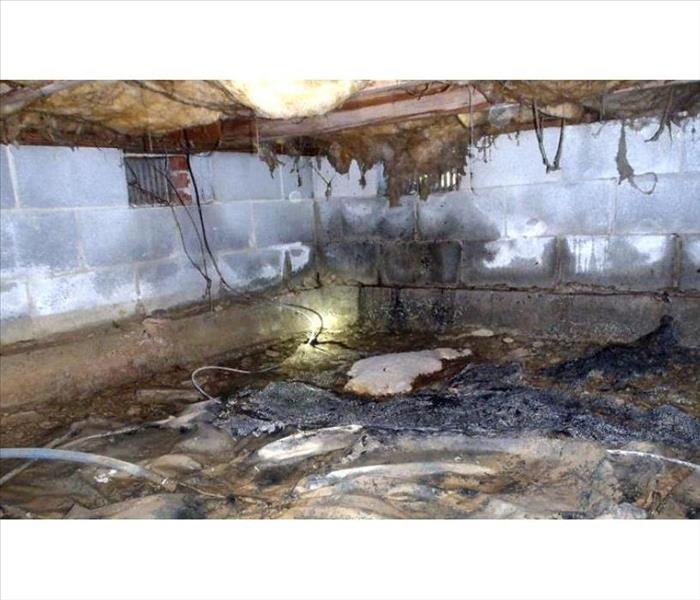 Controlling Moisture in a Crawlspace, Crawlspace in Cherry Hill NJ, Crawlspace in Moorestown NJ, mold in crawlspace,
Controlling Moisture in a Crawlspace, Crawlspace in Cherry Hill NJ, Crawlspace in Moorestown NJ, mold in crawlspace,
Controlling Moisture in a Crawlspace, Crawlspace in Cherry Hill NJ, Crawlspace in Moorestown NJ, mold in crawlspace,
The moisture from these damp crawlspaces not only affects the wood floor structure immediately above, but can travel throughout a building to the detriment of other materials and even the occupants. This excess moisture often condenses on cooler surfaces in a home and can result in wet insulation or delaminated plywood in the attic, sweating pipes, ducts and toilet tanks and mold or mildew on exterior walls.
Increasing the air flow through a crawlspace might not be the best solution to reduce moisture. In some areas, the summer's warm, humid exterior air does little to extract the interior moisture. In the winter, cold air entering a damp crawlspace often just results in condensation forming. Moving air through a crawlspace, below a heated and cooled house, can also reduce energy efficiency and in cold climates there is an increased possibility of frozen pipes.
The wettest crawlspaces (and basements) seem to be directly related to exterior drainage issues. Ground sloping towards the foundation, clogged or missing gutters, and downspouts not properly extended can all contribute to elevated moisture levels and even regular water intrusion.
Exposed earth in a crawlspace can also be a significant source of moisture. Covering the soil with a vapor barrier can reduce the amount of moisture vapor emitted from the ground into the crawlspace. These soil coverings need to be properly installed to be effective. The seams should overlap at least a foot and be sealed with appropriate tape. It needs to completely cover the soil and be sealed to the foundation. Most publications specify a 6-mil polyethylene sheet. Although adequate, it has little puncture resistance. I prefer cross-laminated, high-density polyethylene (think pond liner).
In addition to proper grading and a properly installed vapor barrier, the most pleasant crawlspaces I occasionally encounter do not have vents to the exterior. They also don't have any insulation under the floor above. Some have uncovered openings from an adjacent basement or have an installed heat source. This creates a somewhat "conditioned" space, similar to living areas of the home. Sealing against drafts, insulating the interior of the foundation, and insulating the perimeter of the floor structure below exterior walls creates a pretty efficient way to control humidity levels.
The crawlspace is to be treated like the rest of the building often results in the crawlspace causing less trouble. Preventing Moisture, Humidity, and Microbial growth, is the best solution.
Call a Certified Contractor, to Clean and Remediate Microbial growth.
Water damage in Collingswood NJ, Water damage in Audubon NJ, Why Is Water Leaking From My Central Air Conditioners Inside,
7/31/2017 (Permalink)
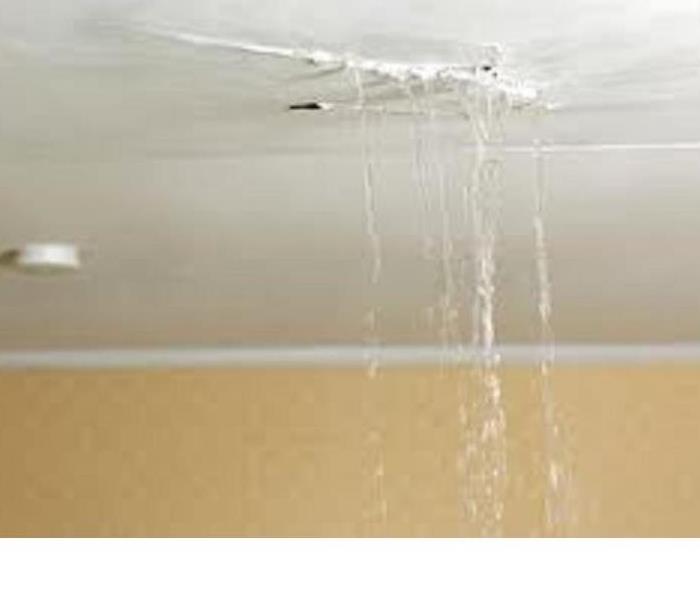 Water damage in Collingswood NJ, Water damage in Audubon NJ, Why Is Water Leaking From My Central Air Conditioners Inside,
Water damage in Collingswood NJ, Water damage in Audubon NJ, Why Is Water Leaking From My Central Air Conditioners Inside,
Water damage in Collingswood NJ, Water damage in Audubon NJ, Why Is Water Leaking From My Central Air Conditioners Inside,
Water has started to pool around your central air conditioner’s inside unit and you have no idea why.
First, you should turn off your air conditioner because this water could harm the electronic parts of your AC and cause water damage to your home. Then you should contact a professional AC repair person for help.
If you want to understand the cause of this problem before calling a professional, read this article.
We’ll talk about:
- Why water forms in the inside AC unit
- Why there’s water all over the floor
- What needs to be done to fix it
Why water forms in a central air conditioner indoor unit
Part of your air conditioner’s job is to pull humidity from the air. The inside unit’s blower pulls in hot, humid air through the return grille and over the inside unit’s cold evaporator coil (pictured above) to cool the air down.
When that happens, condensation/droplets form on the evaporator coil. It’s just like when water droplets bead up on a glass of ice cold water on a hot summer day in Georgia.
That water on the evaporator coil falls into a sloped drain pan and down a condensate drain line like a slip n’slide. That drain line (usually a PVC pipe) either exits out the home (usually near the outside unit) or into your plumbing.
OK, so now you have a general idea of how the water forms and the parts involved. If there’s an issue with any of these parts, that’s why the water is forming around the inside unit.
Here are a few common problems that are causing the issue you’re having.
Clogged condensate drain line or rusted condensate drain pan
If the drain line gets clogged by dirt, insects, mold, or anything else, the water has nowhere to go but back into the home. (Some home’s have a secondary drain line but that may also be become clogged.)
Use wet-dry vacuum to suck out the obstruction from the outdoor PVC condensate pipe.
Also the root of the problem may be a dirty evaporator coil. The dirt will mix with the water and fall down into the pan, clogging the drain. Have a professional clean this coil annually as part of an annual AC maintenance visit.
Also, the drain pan may be rusted through and is falling onto the floor and causing damage to your home. So you’ll need to replace that.
Note: Your air conditioner may have a secondary drain pan to catch the water. This pan has a float switchthat turns off your air conditioner to prevent water damage.
Installation issues
If you have a newer air conditioner, the problem may be installation related. An improperly designed condensate trap will stop the condensate from draining. So all that water builds up in the drain pan and overflows into your home, causing water damage.
You’ll need a professional to examine the condensate trap to see if it has been designed properly and fix it if necessary.
Frozen evaporator coil
Open the blower door of your inside AC unit. Is the evaporator coil covered in ice? When that frozen evaporator coil melts there may be so much water that it flows over the drain pan and then onto the floor.
There are 2 common causes of a frozen evaporator coil:
- Dirty air filter—A dirty air filter blocks airflow over the evaporator coil, causing the temperature to drop below freezing and ice up. Check the air filter and change it if it’s dirty.
- Low refrigerant— Low refrigerant causes the evaporator coil to become much colder than normal, causing it to freeze up.
To defrost the evaporator coil, turn the air conditioner off. Then turn the blower from “auto” to “on.” The fan should melt the ice slowly enough for the drain pan to handle all the water.
In the meantime, you should call a professional to check your air conditioner to make sure it’s is working properly and ensure nothing was damaged.
Just a few of many issues…
There are other causes of water pooling around an inside air conditioning unit, but these are some of the most common.
Humidity, Water Damage in Collingswood NJ, Condensation, Mold, and Indoor Air Quality, in Collingswood NJ,
7/12/2017 (Permalink)
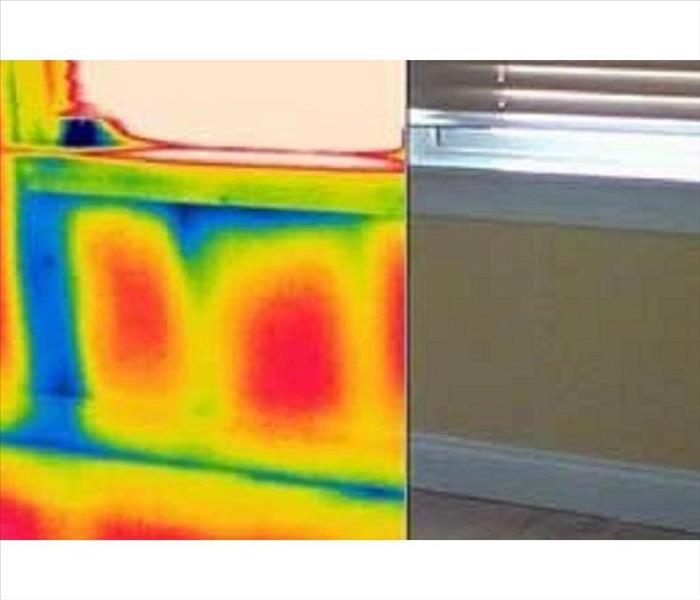 Humidity, Water Damage in Collingswood NJ, Condensation, Mold, and Indoor Air Quality, in Collingswood NJ,
Humidity, Water Damage in Collingswood NJ, Condensation, Mold, and Indoor Air Quality, in Collingswood NJ,
Humidity, Water Damage in Collingswood NJ, Condensation, Mold, and Indoor Air Quality, in Collingswood NJ,
Moisture rides on air currents, and warm air carries more moisture than cool air
To control air flows, make sure the air barrier is continuous
An air barrier helps control airflow both through and within the building enclosure. By controlling airflow, you also control moisture.
If moist indoor air contacts a cold surface — for example, exterior sheathing in cold weather — condensation can result. An air barrier prevents those cold surfaces from being connected with humid indoor air.
Air has a maximum storage capacity for water vapor which depends on temperature. Warm air can store lots of moisture, while cold air can store very little.
As the temperature falls from 90°F down to 20°F, the amount of moisture that can be stored in the air changes by a factor of ten.
Leaky homes didn’t have condensation problems
Older buildings rarely had condensation problems in cold weather because they were so well ventilated — meaning leaky. The relative humidity in an old home would rarely rise above 25%. As we have built tighter houses (and in some cases failed to provide mechanical ventilation), the indoor relative humidity has gone up.
In a heated, tight, unventilated house, the amount of moisture in the air and the amount of condensation that can occur are dramatically different than in an old leaky house. Condensation can occur wherever water vapor can find a cold spot — on roof or wall sheathing, on the inside faces of the windows, and inside the walls.
Let's say it’s 40°F outside and the outdoor relative humidity is 50%. If you allow that outdoor air to enter a building and heat it up to 70°F, the amount of moisture in the air stays exactly the same, but the “tank” gets bigger because the storage capacity of the air increases with the temperature. As a result, the relative humidity initially drops. Then, as moisture is added to the air, the relative humidity rises, and the absolute moisture content rises as well. How do you add moisture to the air? You breathe, sweat, boil water for spaghetti, take hot showers, grow houseplants — and all of those activities generate moisture.
When does indoor humidity become a problem?
Let’s say that air leaks out of a house through holes in the enclosure. As it reaches surfaces colder than 52°F or 53°F, the air will cool. Once it reaches its full capacity to store moisture, condensation occurs.
If the temperature of the outdoor air is around 30°F, the indoor air will drop all of the moisture that it gained on the way out, dumping it on the cold sheathing surface. That’s a typical example of the air leakage condensation cycle. Since condensation in walls can cause puddles — and in extreme cases, rot the framing — condensation is something you want to avoid. Installing an air barrier is one way to help prevent condensation.
Air conditioning can also create condensing surfaces
The same phenomenon can happen in reverse in the summertime. Let’s say the outdoor air is 85°F and the relative humidity is 75%. When outdoor air leaking inward contacts a surface below about 76°F, the moisture in the air will condense. So if you have an exhaust fan in your home, the air leaking in may cause condensation on the air-conditioned surfaces — for example, on the back side of vinyl wallpaper.
If moist air leaks into a house through gaps in the wall or roof, you can have problems. But in a tight house with a good air barrier and a supply-only ventilation system, most of the air that’s drawn inside is drawn in through the air conditioner, so the first cold surfaces it sees are the cooling coils.
If you have air leaks in your building envelope, you usually can’t see the condensation —Unless you have an Infrared Camera with a Visual Inspection. However, condensation is sometimes visible in the attic; all you have to do is look for frost or dampness forming on the underside of the OSB or plywood roof sheathing.
Mold Remediation in Mt. Laurel NJ, Mold Remediation in Moorestown NJ,
7/3/2017 (Permalink)
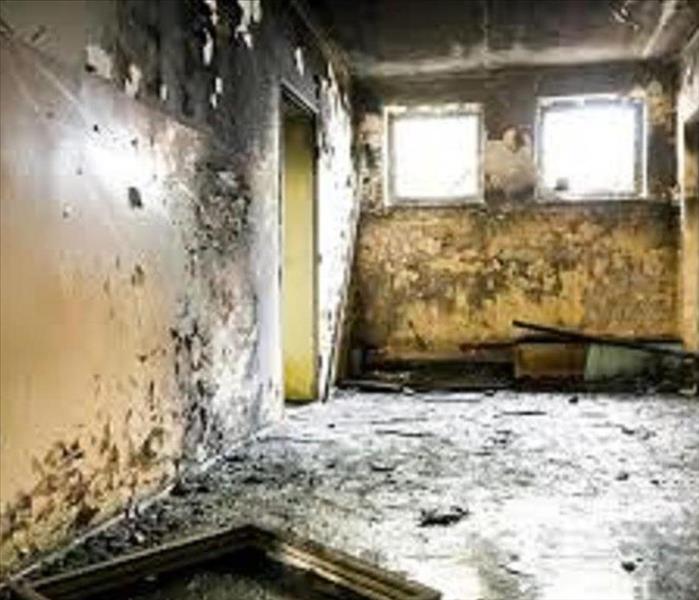 Mold Remediation in Mt. Laurel NJ, Mold Remediation in Moorestown NJ,
Mold Remediation in Mt. Laurel NJ, Mold Remediation in Moorestown NJ,
Mold Remediation in Mt. Laurel NJ, Mold Remediation in Moorestown NJ,
While residential property owners should be aware of conditions that could impact their home, learning about a mold infestation is particularly important. By getting a clear understanding of what mold is and how to prevent it, you can preclude your property from being subjected to structural damage and health hazards with mold remediation from SERVPRO. Learn more about mold and how to keep your property safe by reviewing this short outline:
Mold: A Brief Overview
Mold is a fungus. Positive factors for mold growth are moist, wet environments, a food source of cellulose or other organics and poor ventilation. Homeowners who suffer water damage often find that mold starts to proliferate in their residential property. If mold growth is not identified and treated, it can cause health effects. Additionally, mold can adversely impact your indoor air quality giving off a musty odor and cause discoloration of walls, ceilings and furniture.
Why You Should Hire A Professional Mold Remediation Specialist
Often, homeowners are interested in completing the mold removal process on their own. However, completing a do-it-yourself project in this instance is not very advisable. A small patch or a bit of mold on tile grout can be cleaned and controlled by a homeowner. Most homeowners do not possess the specialized equipment and safety gear and clothing required to execute the mold remediation process. Additionally, hiring a team of professional remediation specialists from SERVPRO can shorten significantly the unhealthy home air quality. Finally, most homeowners do not possess the knowledge and experience necessary to complete the mold removal process safely. When done incorrectly, DIY projects can cause you to spread the mold infestation in previously uncontaminated living areas thereby increasing susceptibility to health risks, structural damage, and costs.
Benefits Of Securing a Professional Mold Remediation Service
• Assessing the dangers of existing mold
• Locating the source of the problem
•Containing affected regions of the home to prevent mold spore proliferation, including HVAC ductwork
• Eliminating the mold colonies, reducing mold spores to normal levels
•Cleaning, drying and disinfecting all surfaces affected by mold
Deodorizing the musty odor with ULV foggers
As an IICRC-certified company, the SERVPRO professionals are experts in Applied Microbial Remediation. Additionally, we are highly skilled in working directly with industrial hygienists, insurance adjusters, and residential property owners to offer full-service mold remediation service.
Having a company that can coordinate the whole process from start to finish to make your life easier, and gets you back in your home or business faster. “Like it never even happened.”
Stucco Remediation – What You Should Know
4/20/2017 (Permalink)
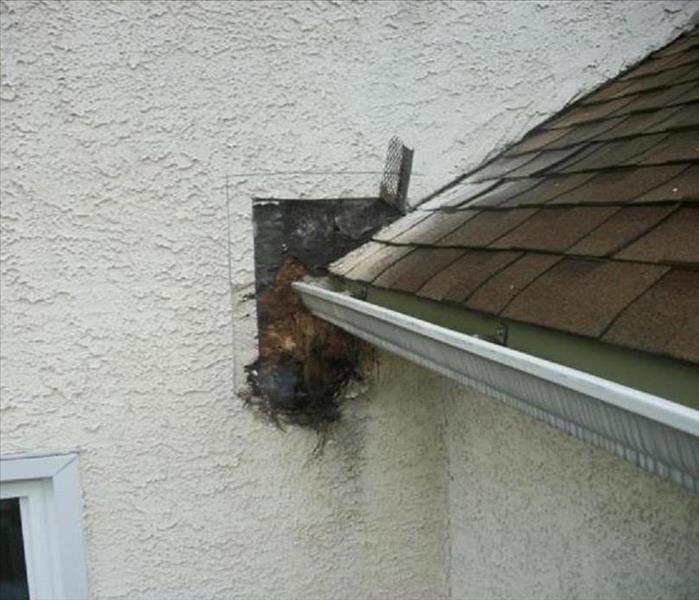 Stucco Remediation – What You Should Know
Stucco Remediation – What You Should Know
Stucco Remediation – What You Should Know
Every home, no matter when it was built or when you purchased it, can fall prey to stucco failure, mold and moisture contamination. Even the tiniest of cracks in the façade of your home can result in moisture coming in, which can then cause major problems. If that happens, it can threaten the very structure of your home as well as the health of your family. If it isn’t treated properly, mold can cause extensive and costly damage.
Signs that you need repairs include cracking or breaking in the façade of your home, or brown streaks below your windows or at intersection of the wall and roof. Inside, you’ll notice leaks in doors or windows, the bottoms of your windows may be discolored, your base trim can become warped and there may be wet carpet or a moldy smell in your home.
But did you know your stucco doesn’t even have to be cracked to have problems? Heller explains that it wasn’t until fairly recently that proper weep screens and break points in the stucco were required. That means walls may not breathe properly, which can allow moisture to build up and then be trapped.
That’s just one of the many reasons it is important to call your building contractor to inspect your home for damage. The contractor may be able to find problems that you never even knew existed and stop a problem before it becomes too big and costly.
The process of repairing the stucco is referred to as stucco remediation. Your first instinct may be to simply call a stucco company to repair the façade of your home, but that might not be the right thing to do.
Companies that are stucco only will have the know-how to remove and replace the existing façade of your home.
While this is important, it may simply cover up the effects caused by the moisture. The structural integrity of your home and the health of your family can still be in jeopardy if the underlying problems still exist.
Simply put, a stucco repair company could lack the knowledge and ability to identify and repair the problems that result from the water damage. And if they aren’t properly corrected, that can lead to even more damage and expense in the future.
Moisture intrusion most often affects stucco-clad homes, but can also affect homes made of brick, stone, wood or composite siding, and typically affects homes built between 1985 and 2003. Having the right person inspect your home for damage is crucial to find and repair problems to the home’s wood structure that aren’t visible to the eye. Rot and mold within the wall cavity can cause serious damage.
Mold and your property
1/23/2017 (Permalink)
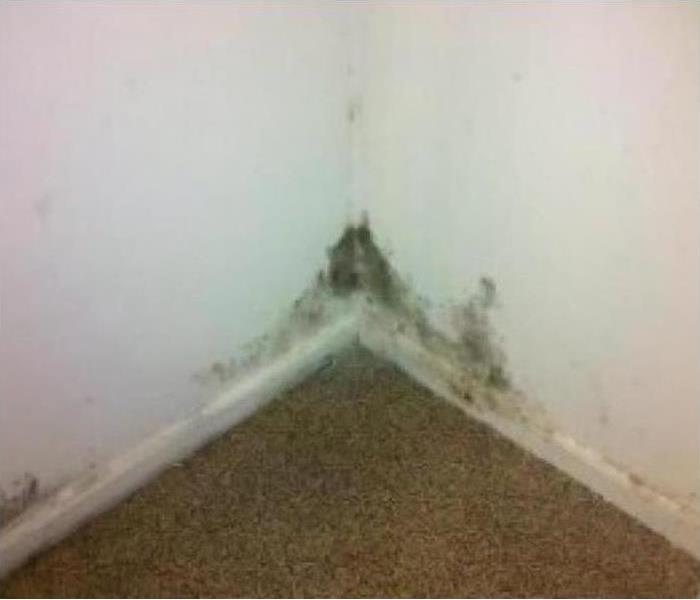 mold
mold
Ten Things You Should Know about Mold
- Potential health effects and symptoms associated with mold exposures include allergic reactions, asthma and other respiratory complaints.
- There is no practical way to eliminate all mold and mold spores in the indoor environment; the way to control indoor mold growth is to control moisture.
- If mold is a problem in your home or school, you must clean up the mold and eliminate sources of moisture.
- Fix the source of the water problem or leak to prevent mold growth.
- Reduce indoor humidity (to 30-60%) to decrease mold growth by:
- Venting bathrooms, dryers and other moisture-generating sources to the outside
- Using air conditioners and de-humidifiers
- Increasing ventilation
- Using exhaust fans whenever cooking, dishwashing and cleaning
- Clean and dry any damp or wet building materials and furnishings within 24-48 hours to prevent mold growth.
- Clean mold off hard surfaces with water and detergent, and dry completely. Absorbent materials such as ceiling tiles, that are moldy, may need to be replaced.
- Prevent condensation: Reduce the potential for condensation on cold surfaces (i.e., windows, piping, exterior walls, roof, or floors) by adding insulation.
- In areas where there is a perpetual moisture problem, do not install carpeting (i.e., by drinking fountains, by classroom sinks, or on concrete floors with leaks or frequent condensation).
- Molds can be found almost anywhere; they can grow on virtually any substance, providing moisture is present. There are molds that can grow on wood, paper, carpet, and foods.
How to Protect your Basement from Water Damage
12/30/2016 (Permalink)
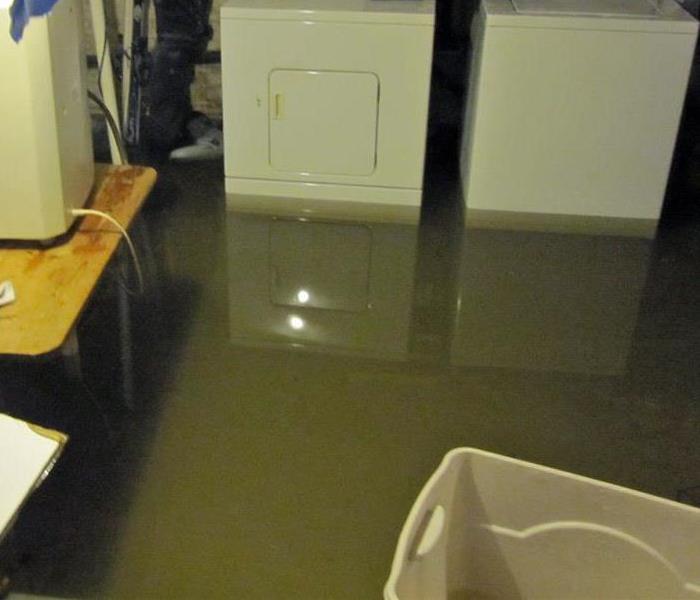 Flooded basment
Flooded basment
I just bought my first home. Unlike most homebuyers who are looking for an open floor plan or a gourmet kitchen, my first stop was always the basement! My favorite time to look at houses was in the rain, when I could determine if the basement was prone to flooding. Several times, I walked into a house's basement and watched as water ran down the walls.
Obviously, frequent water intrusion in your basement can cause issues with your foundation, and mold. But most people don't know what to look for or how to protect their basement until after they've experienced a water damage. What's obvious to me as someone who has worked in the restoration industry for 4 years may not be obvious to every homeowner, so here are some tips to help you stay dry!
- Get a sump pump. Get the sump pump rider on your insurance policy while you are at it. If you have a sump pump and it fails, your homeowners insurance will not cover the damage. Even if your home or business has never taken on water, it doesn't mean you are immune to it. Get the sump pump and check that it's functioning properly regularly.
- Consider a French drain or some other form of waterproofing. Have a professional do the work. Google the benefits. You may be surprised!
- Keep your gutters free of debris and position downspouts away from the foundation. The goal is to drain water at least three feet away, so if necessary, consider running extensions or troughs.
- If you haven't had your sewer inspected or your septic tank cleaned, now is a good time to do that. During periods of prolonged, heavy rainfall (think Hurricane season!), clogged sewers and over-taxed septics are disasters waiting to happen.
- If you have below-grade basement windows, install window covers that fasten securely to your foundation. Clear acrylic covers allow light to enter while keeping out water.
- Check the age on your hot water heater. They generally last about 10 years. If yours has made it longer, that's not necessarily a good thing! Don't wait for it to fail before you replace it.
- If you use your basement for storage, build shelves at least 6 inches from the ground. Store items in plastic bins. Photograph everything you store down there in case you need to replace it later.
- If you have a finished basement, get a good-quality dehumidifier. Consider tile floors or polished concrete over carpets.






 24/7 Emergency Service
24/7 Emergency Service
